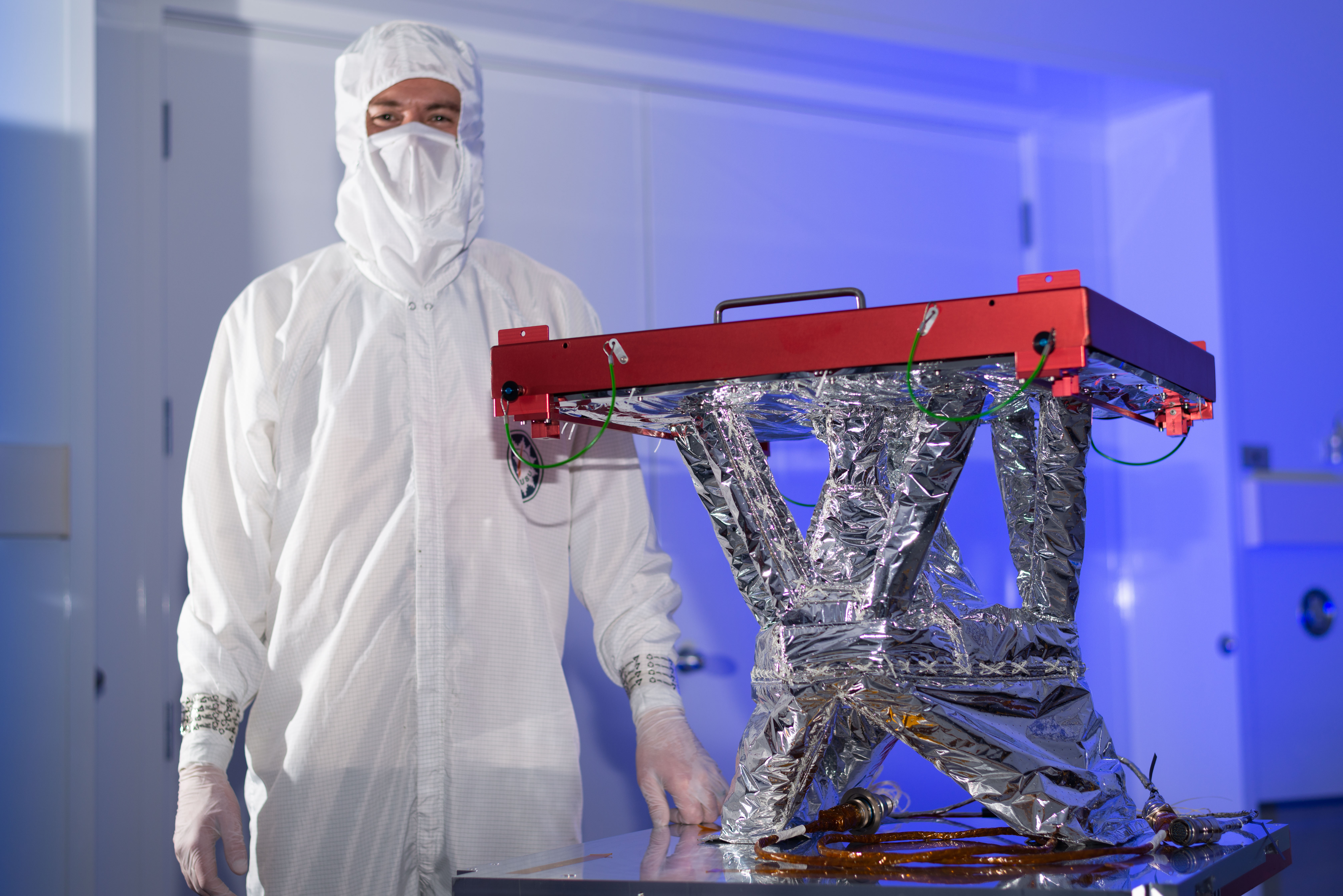Credit: NASA/JPL-Caltech
NASA’s Europa Clipper launched on October 14 with the SDL-built MISE RCM onboard. The RCM represents SDL’s growing heritage in thermal subsystems and will help Europa Clipper search for habitable worlds beyond Earth.
Europa is one of Jupiter’s largest moons. This icy moon shows evidence of a huge saltwater ocean beneath its surface, containing twice as much water as Earth’s oceans combined. After traveling 1.8 billion miles and arriving at its destination about five and a half years from now, NASA’s Europa Clipper will conduct 49 flybys of Europa to gather data about this ocean and determine whether the moon contains organic compounds and energy sources under its surface that could make it habitable.
Spacecraft Challenges
Europa Clipper is the largest spacecraft NASA has ever built for a planetary mission, and it has been designed to withstand Jupiter’s punishing radiation environment. According to NASA, “Jupiter is surrounded by a gigantic magnetic field 20,000 times stronger than Earth’s. As the field spins, it captures and accelerates charged particles, creating radiation that can damage spacecraft.”

Instrument Protection
In such an environment, protecting sensitive instruments is critical. SDL designed, built, and tested the Radiator Cryocooler Mount (RCM) assembly for the Mapping Imaging Spectrometer for Europa (MISE), one of Europa Clipper’s nine science instruments. MISE, built by NASA’s Jet Propulsion Laboratory (JPL), is an infrared spectrometer designed to map Europa’s distribution of ices, salts, organics, and warmest hotspots by imaging reflected infrared light and separating it into its various wavelengths. The SDL-built RCM will transfer heat away from MISE, enabling the instrument’s detector and spectrometer to reach a temperature of nearly 80 K (approximately -315°F). Additionally, the cryocooler is equipped with heaters and temperature sensors to protect the cryocooler and radiator from getting too cold.
SDL Program Manager Curtis Bingham explained, “Because MISE will image Europa in the infrared wavelength, it’s critical that the instrument remains cooler than the moon’s surface materials. To accomplish this, SDL provided the RCM assembly, which incorporates space-proven technologies such as a radiator, cryocooler, thermal straps, heaters, and temperature sensors—all integrated into a structure that can survive launch vibrations and Europa’s harsh radiation environment.”

The Launch
Curtis and other SDL MISE team members were near the Kennedy Space Center to witness the Europa Clipper launch. Curtis said, “It was exciting to see that large Falcon Heavy lumber into the air, pick up speed and altitude, and set its trajectory. I had to keep reminding myself that atop the rocket was our piece of flight hardware we’d delivered to JPL three and a half years ago! It is rewarding to know that our team’s hard work on the MISE instrument and the Europa Clipper mission supports our key partners and will contribute to meaningful space science.”
Mechanical Engineer Andrew Ostler said, “SDL was awarded the MISE RCM contract nearly seven years ago, and I was fortunate enough to work on it from the beginning. After all the hard work by the SDL team, it was incredible to witness the launch. It’s humbling to consider that Europa Clipper left our atmosphere in a matter of minutes, yet it will take nearly six years to reach its final destination, Jupiter—it puts into perspective how small we are in the universe, and how much there is yet to explore.”
Curtis added, “As I reflect on it, the most rewarding part of the work has been collaborating and problem solving with over 50 talented and dedicated SDL employees who contributed to the MISE RCM over the life of the program. Learning about the possibility of life on other planets is fascinating, but the privilege to be part of people’s lives on this planet is really what life is all about!”

What’s Next for SDL Thermal Subsystems?
Between late 2026 and early 2027, the Nancy Grace Roman Space Telescope is planned to launch, with the Coronagraph Instrument (CGI) built by JPL onboard. SDL designed, fabricated, and tested the Cryogenic Thermal Subsystem (CTS) for the CGI. According to NASA, the CGI will eliminate the glare of nearby stars, so astronomers can directly image the planets in orbit around them.